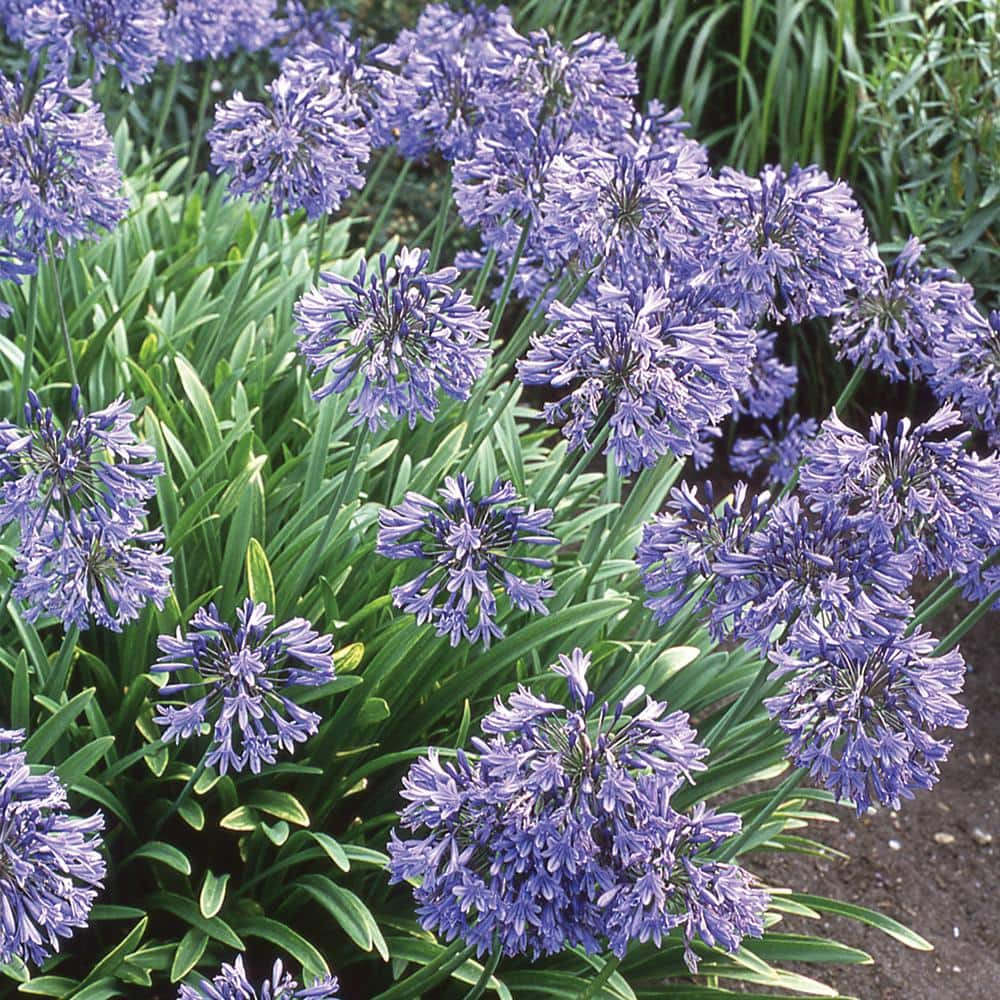Seasonal Agapanthus Care: Preparing for Winter and Summer season
Seasonal Agapanthus Care: Preparing for Winter and Summer season
Blog Article
Grasping the Art of Agapanthus Treatment: Crucial Actions for Healthy Growth and Vivid Blossoms
In the realm of horticulture, the cultivation of agapanthus stands as a gratifying endeavor for those who look for to nurture these sophisticated flowering plants. With their striking flowers and graceful foliage, agapanthus has actually recorded the attention of garden enthusiasts worldwide. Nevertheless, achieving ideal development and lively blooms calls for a nuanced method that includes numerous vital steps. From picking the appropriate range to grasping pruning strategies, the trip in the direction of growing flourishing agapanthus plants is diverse and holds the essential to opening the full potential of these herb treasures.

Picking the Right Agapanthus Range

When selecting the right Agapanthus range for your garden, consider aspects such as climate suitability, bloom shade, and growth routine. Furthermore, think about the environment in your area to make certain the Agapanthus selection you select can grow in your specific problems. Recognizing the development behavior of various Agapanthus ranges is vital for correct placement within your yard.
Suitable Planting Problems
Thinking about the optimal ecological demands is essential for successful Agapanthus growing. Agapanthus thrives in well-draining dirt with a slightly acidic to neutral pH level. When growing, select a location that obtains full sunshine to partial shade. In hotter environments, supplying some mid-day color can avoid scorching of the leaves. Agapanthus plants are sensitive to cool temperatures and should be secured from frost during cold weather.
To make certain healthy and balanced growth and vibrant blossoms, plant Agapanthus light bulbs at a depth of regarding 2-4 inches and room them 8-12 inches apart. Including raw material, such as garden compost, to the dirt can improve water drainage and fertility, advertising robust root advancement. Mulching around the base of the plants aids retain moisture and reduces weed growth. Routine watering is vital, especially during the expanding period, to keep the dirt continually wet however not waterlogged.
Watering and Feeding Tips
Keeping correct wetness levels and offering crucial nutrients are essential components in the care program for Agapanthus plants. When it comes to watering Agapanthus, it is critical to strike an equilibrium. These plants choose consistently wet soil however are susceptible to root rot if overwatered.
Feeding Agapanthus is important for advertising healthy growth and prolific blossoms. Apply a balanced plant food, such find out this here as a 10-10-10 formula, in the early springtime as brand-new development arises. By following these watering and fertilizing pointers, you can ensure your Agapanthus plants flourish and create lively, resilient flowers.
Pruning Strategies for Agapanthus
Trimming Agapanthus plants at the appropriate times and with appropriate strategies is important for preserving their health and wellness and advertising ideal growth and flowering. The optimal time to prune Agapanthus is in late wintertime or very early springtime before brand-new development emerges. Start by eliminating any type of yellowing or dead fallen leaves near the base see this page of the plant. Cut them as close to the ground as possible without damaging the emerging shoots.
Deadheading spent blossoms can also reroute the plant's energy right into producing even more flowers instead than establishing seeds. If you desire to accumulate seeds for propagation, leave some flowers to dry and mature on the plant.
Keep in mind to make use of clean, sharp devices to make accurate cuts and minimize the danger of presenting diseases. Agapanthus. Routine trimming will certainly help keep your Agapanthus looking neat and healthy while making certain an abundant screen of lovely blossoms
Handling Usual Bugs and Illness
After guaranteeing correct trimming methods for Agapanthus, it is necessary to address typical parasites and diseases that can affect the see health and wellness and vitality of these plants. One usual insect that affects Agapanthus is the Agapanthus gall midget.
Additionally, Agapanthus plants can suffer from root rot if they are grown in badly draining dirt. By being cautious and taking punctual action versus pests and illness, you can aid your Agapanthus plants prosper and generate vivid blossoms. Agapanthus.

Conclusion
Finally, grasping the art of agapanthus care entails choosing the best selection, supplying optimal growing problems, proper watering and fertilizing, suitable trimming techniques, and dealing with typical parasites and diseases. By adhering to these crucial steps, you can make certain healthy and balanced development and lively blossoms for your agapanthus plants. Bear in mind to consistently keep an eye on and maintain your plants to promote their total well-being and long life.
To ensure healthy development and dynamic blooms, plant Agapanthus bulbs at a depth of about 2-4 inches and room them 8-12 inches apart. By following these watering and feeding pointers, you can guarantee your Agapanthus plants grow and create vivid, lasting blossoms.
One common bug that influences Agapanthus is the Agapanthus gall midge. Furthermore, Agapanthus plants can endure from root rot if they are grown in poorly draining dirt. By adhering to these vital actions, you can make sure healthy growth and vivid flowers for your agapanthus plants.
Report this page